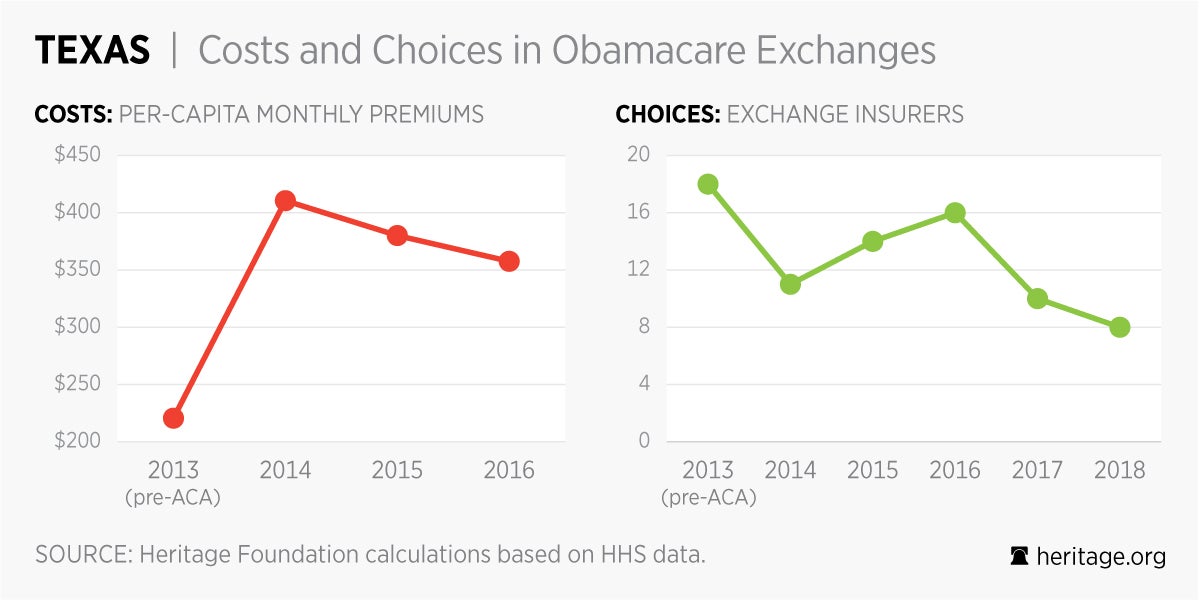- Over the first three years of Obamacare, per capita monthly premiums in Texas increased by 62%, from $221 in 2013 to $358 in 2016.
- Over the first five years of Obamacare, 56% fewer insurers offered Exchange coverage in Texas, from 18 in 2013 to 8 in 2018.
- 2019 Rate Request:InTexas, Blue Cross and Blue Shield is proposing an average rate reduction for 2019 of 6.5%. Previously, Blue Cross increased rates by 45% in 2017, and by an additional 20% in 2018. All other Texas individual market insurers are asking for rate increases in 2019: Molina is requesting an average increase of 9.4%; Community Health Choice is seeking a 8.46% increase; Celtic (a subsidiary of Centene) is asking for an average increases of 4.7%; CHRISTUS Health Plan is seeking increases rangingfrom 7.03% to 15.88%for its five plans; Oscar is requesting an average increase of 17%, and; Sendero Health Plans is seeking an increase of 33.13%. In addition, two Texas insurers—Vista Health Plan and Scott and White—sell individual market coverage, but only off-Exchange. For 2019,Vista is requesting a rate increase of 16.03%, while Scottand White is asking for rate increases of 19.05% and 35.07% for its plans.
- 2019 Rate Finalized: Finalized by mid-October
Health care remains a major focus of the public discussion as premium prices rise and choices dwindle. Throughout the summer and into the fall, Obamacare insurers will announce decisions about the prices they want to charge and plans they want to offer next year, submitting them to regulators for review and approval. Research shows prices have been rising steadily since Obamacare was first implemented, more than doubling in some places because of its failed policies and regulations.
The best way to provide relief for Americans struggling under these heavy burdens is to replace Obamacare with free-market solutions that put patients and doctors—not federal bureaucrats—in charge of health care decisions and dollars.
The three states that have begun to provide this kind of relief – after being granted federal waivers from Obamacare - are seeing rate reductions. Congress should go farther and make it easy for states to take these actions.
This piece was authored by Ed Haislmaier.



